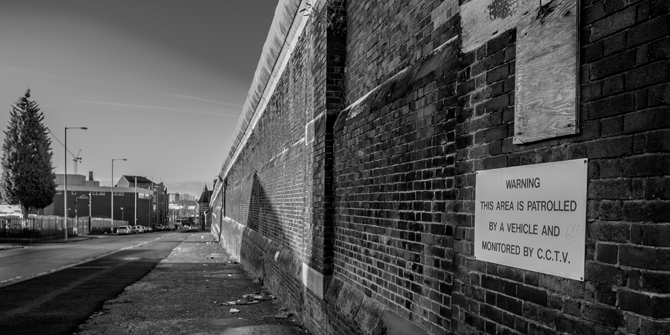Colonial era investments in education in Sierra Leone have concentrated largely in urban centres, leading to a disparity in levels of attainment. Henry Musa Kpaka and David Sengeh explain how Educational Technology is helping to bridge the gap.
Sub-Saharan Africa is facing a learning crisis. Free primary and secondary education policies have made it possible for millions of children across the continent to gain access to education; however, the quality of education remains low. Pupils have low competencies in areas of literacy, numeracy, and science. Rural areas are most affected, where the majority of students are not gaining the skills to contribute to the human capital base
Sierra Leone is illustrative of this challenge. Early 2000s post-conflict reforms in education focused on infrastructure development to extend access to education, especially focused on narrowing the gender gap. The fee-free primary education policy over the past decade increased access to millions of children across the country. Government data reports that Primary school enrolment (% gross) stands at 112.7. More children are transitioning to secondary education. In 2020, close to 150,000 pupils sat for the National Primary School Examination (NPSE), compared to about 120,000 in 2018.
Despite these successes, learning outcomes remain unacceptably low and the gap in outcomes between rural and urban areas is growing. A 2019 baseline conducted for the Education Innovation Challenge found that 77% of class six pupils cannot read and comprehend a simple paragraph—a test that students in class three are expected pass. Furthermore, over 35% pupils cannot perform any mathematical operations after six years of primary schooling. The situation is much worse for rural children. A girl in rural Sierra Leone today is more likely to be taught by an untrained teacher, may need to walk more minutes to reach school, and is likely to have lower competencies in literacy, numeracy, and science compared to urban peers. In the recently completed NPSE, the pass-rate for Western Area (the capital region) is at least 10 percentage points higher than any other region.
Colonial Roots to the Education Disparity in Sierra Leone
Urban bias in education attainment has persisted since Independence in Sierra Leone. Comparing 1963 census data on literacy levels with the latest census data reveals a sobering picture; literacy levels in the provinces in 2015 are still below those attained by Western Area Urban in 1963. Like elsewhere on the continent, colonial era investments in education, concentrated largely in urban centres correlates strongly with the spatial pattern of education attainment in Sierra Leone today.
Post-independence political economy drivers have contributed to widening of the gap. Compared to rural areas, most urban settings in Sierra Leone have better infrastructure, including, roads, health facilities, internet, mobile coverage, electricity and better opportunities for wage labour. This makes it hard to hire and retain quality teachers in rural areas. Trained teachers for core subjects—maths and science—are critically low in rural areas compared to urban centers. Less than 3% of trainee teachers are specialising in maths and less than 7% in science.
The 2018 Free Quality School Education (FQSE) policy being implemented by H.E. President Bio provides an opportunity to achieve equity. But what approach should Sierra Leone take towards achieving quality education for all?
A Bold Approach to Radical Inclusion in Education
The COVID-19 pandemic brought a focus on using education technology (EdTech) to provide quality distance education for learners everywhere. In Sierra Leone distance learning was centrally developed and deployed for primary and secondary learners through radio, and, in a limited case, TV. Central development of digital education content standardises the quality of education learners receive everywhere. This aspect of digital design and delivery of education content is a potential game-changer in reducing geographic disparities in Sierra Leone.
EdTech conjures up images of kids with iPads loaded with apps—Khan Academy or Massive Open Online Course (MOOCs) platforms. The socioeconomic dynamics in Sierra Leone cannot support this approach. We know from the Ebola school closures that radio education was impeded by several social and economic factors—proximity to radio coverage, whether a household can afford to buy a radio/battery, and program timing. If poorly designed and implemented, digital learning tools may further deepen disparities.
However, the Ministry of Basic and Senior Secondary Education, headed by Dr. David Sengeh, a co-author here, believes the country has little to lose by trying these innovative approaches. Improving teacher quality and balancing the pupil-qualified teacher ratio across the country remains a priority. Improving school infrastructure and training materials and engaging parents are also critical. Given the persistence of this challenge, more is needed to ensure quality education reaches everybody everywhere.
The government is funding education innovation challenges that place priority on digital learning tools. EdTech solutions that can have the biggest impact at improving outcomes while also eliminating disparities are ones that can be delivered in classrooms to complement teachers. It is now possible to have low-tech, low-cost and user-friendly tools to facilitate learning. In situations where trained teachers are in short supply, EdTech can be used for teachers to train each other. Trained teachers can be attached to school catchment areas where they visit schools on rotational basis but can rely on EdTech to train others to supplement. EdTech can also be used to monitor education delivery. Reducing teacher absenteeism and building a digital profile of students to enhance the quality feedback for students will also help improve outcomes. Some of these ideas will fail while others will succeed. We will learn from the failures and scale-up successful solutions.
Acceptance from critical users, such as teachers and students, is a major obstacle. Perhaps the biggest impetus to take on this challenge now with this approach is that distance learning during this pandemic period has primed teachers, parents, and learners to accept the solution. Both COVID-19 and Ebola have demonstrated that investing in tools like these is not a luxury, but a necessity.
Note: this article gives the views of the authors, and not the position of the LSE Department of Government, nor of the London School of Economics.
Main image credit: Jordan Rowland on Unsplash





